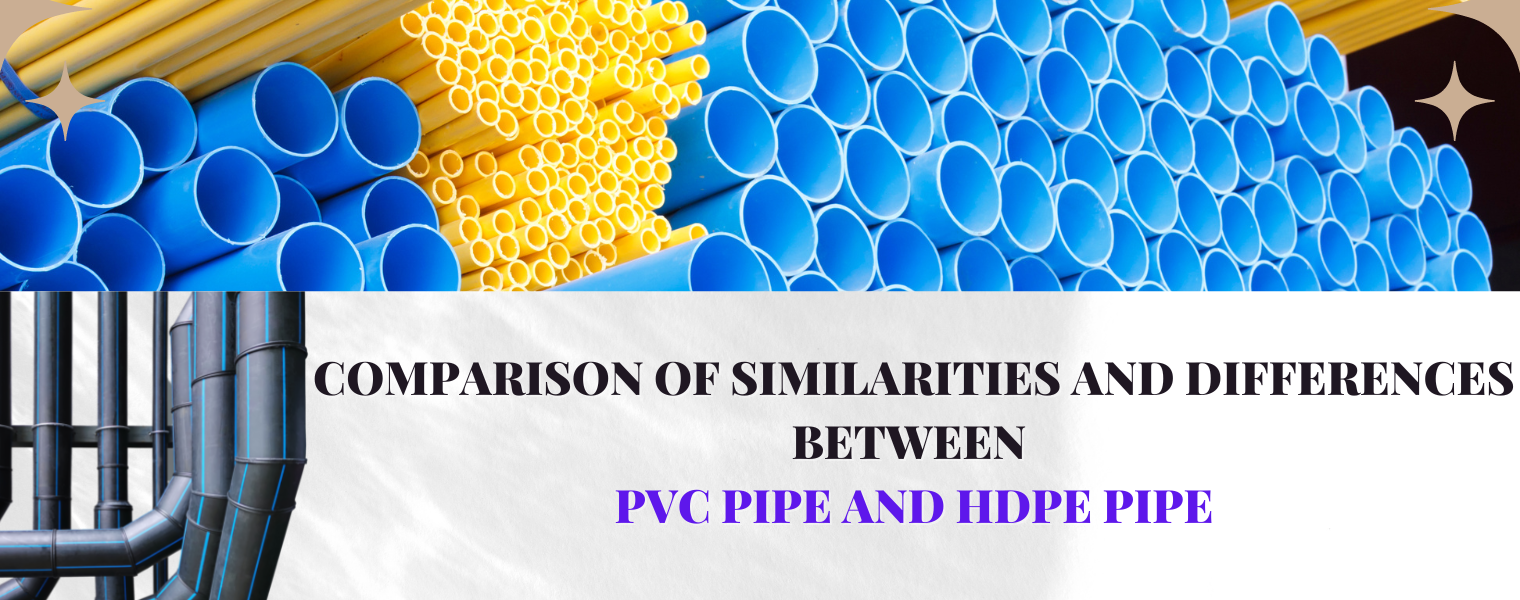
PVC and HDPE pipes are common options for a variety of industrial applications, including plumbing, drainage, irrigation, electrical power and telecommunications, as well as the collecting and transportation of oil and gas. Prior to selecting one type over the other for a given application, it is important to recognize the two kinds' significant distinctions even though they have some similarities.
PVC pipe and HDPE Pipe have traits in common. Both are composed of plastic, are portable, resistant to corrosion, and do not accumulate bacteria or chemicals. The shipping and installation processes are comparable, and both can be utilized in many of the same applications. PVC pipe is less resilient than HDPE pipe, especially in harsh weather conditions.
End-to-end fusion produces a nearly leak-free connection along the course of the pipe, even though fusing HDPE parts can be more expensive and require specialized equipment. Additionally, HDPE Pipe is simpler to install in places where digging is difficult or impossible.
The flexibility of HDPE pipe is one of its main advantages, which is frequently displayed during earthquakes or other seismic events. It can survive shock, pressure, and movement that would ordinarily ruin rigid pipes due to its great ductility and capacity to resist deflections from ground movement. This can save lives after an earthquake when water lines are needed to put out fires, provide drinking water, and sustain communications via underground, secure HDPE conduit lines.
HDPE Pipe also provides a benefit that is discovered after installation. The nation's deteriorating infrastructure can now be replaced or restored by using pipe bursting in conjunction with HDPE pipe. Pipe bursting is a trenchless technique for replacing underground water, gas, and sewer pipes without the need for a standard construction trench and related tools.
This procedure essentially "bursts" the older pipe with new high density polyethylene by pulling the HDPE pipe through the existing pipe. There is no need to dig, transport off, or dispose of the old pipe's remains with this less invasive technique. The cost of other techniques to remove or replace the old pipe can be three to five times higher. Additionally, the pipe bursting technique complies fully with all federal norms and standards.
Make sure to select PVC pipe and HDPE pipe from the top PVC and HDPE pipe manufacturers if you want to get high-quality products for your project. Due to its high level of durability, customers favor HDPE pipes. Polyfab takes pride in offering our clients high-end, technologically advanced products at competitive prices. Polyfab Plastic Industry serves the markets globally including Nigeria, Ethiopia, Kenya, Ghana and other countries.